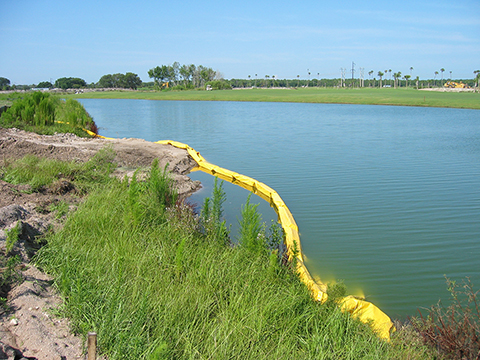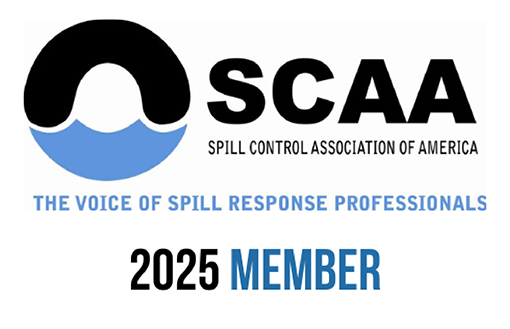In most cases the barrier should extend the full depth of the water to 1ft off the bottom. There are exceptions to this rule. For very still water it is acceptable for the barrier to extend closer to the bottom. For water with large wave or wind action, extending a barrier more than 12 feet might subject the barrier to very high loads.
What standard sizes do you offer?
In general, we attempt to have stock of the following sizes:
Lead times are based on the type of barrier and quantity needed. Our stocked barrier sizes often ship within 1-2 business days.
The two biggest factors that affect cost are size and type. There are cost savings and lead time benefit if you purchase a standard size we stock.
Yes, we can make 100ft sections but our standard length is 50ft. We recommend using multiples of 50ft to achieve the length needed.
Our barriers come in Tough-Guy Yellow and comply with all DOT color requirements. Barriers can be made in other colors upon request.
The Army Corp of Eng. advises against placing a barrier across a water course and acknowledges that there are some sites with an environment where a turbidity barrier will not function. At water velocities approaching 3 knots the force of the water is strong enough to lift the barrier skirt, regardless of ballast size, from the vertical and the efficiency of the barrier drops as the velocity increases. Above 3 knots the efficiency is zero and survival of the barrier comes into question. Any obstructions to the movement of the barrier hastens the damage.
We do not sell direct or install barriers. However, we work directly with the best distributors in the nation who can help direct you to a local installer.
Barriers are installed connecting end to end by means of rope through grommeted holes. For barriers containing a top cable and corner plates the shackle from one barrier will be connected to the cable loop of the next in line as well as a shackle connecting corner plates to the bottom chain. Additional installation procedures may be required for barriers featuring special end connectors.
Anchors will need to be ordered separately. We recommend using at least one anchor per barrier depending on the application.
Installation supplies must be furnished by the installer and may be different depending on the type of barrier
We do not. Shore anchors must be furnished or created by the installer.
Many of our standard barriers already comply with certain state DOT requirements. Other many require additional components. We are happy to work with you on a case-by-case bases to ensure the barrier you order will satisfy the requirements you need.
The need for using 22oz fabric over our standard 18oz is typically done more to withstand lengthy Sun/UV exposure and to satisfy governmental regulations rather than increasing barrier strength for harsh conditions.
We recommend removing a barrier during icing conditions and then reinstalling it later when ice is no longer present. Ice will very like damage the barrier and make it unusable.
Our barriers in general are not detrimental to wildlife habitats. They are designed to be flexible and unobtrusive to the environment and are merely an extra object in the water. The materials and components we use do not contribute to contamination of natural water sources.
“Aer-Flo is incredibly reliable. When they say they will take care of something, you know it will be done.”
— Texas Distributor —
“Aer-Flo is the go-to company for all environmentally sensitive projects.”
— Alabama Distributor —
“I’ve never had an issue with an order being fulfilled. They always get it done.”
— Florida Distributor —
“In today’s environment, getting products out to customers isn’t easy for some companies. But for Aer-Flo, this isn’t an issue. If they say they’ll get you the product, they do it.”
— Alabama Distributor —
“It is VERY easy to get a hold of someone at Aer-Flo and get questions answered and get real, live help with orders.”
— Florida Distributor —
Aer-Flo is the creator and innovator behind the Tough Guy barriers range of products. Tough Guy barriers utilize industry-leading materials to provide the best solutions across a variety of industries.
Customers rave about our Tough Guy line which is widely recognized as the go-to brand. And like all Aer-Flo products, Tough Guy barriers are designed and manufactured in the United States.
Learn More about Tough Guy Barriers

 4455 18TH STREET EAST, BRADENTON, FL 34203
4455 18TH STREET EAST, BRADENTON, FL 34203
PH: 941.747.4151 FX: 941.747.2489